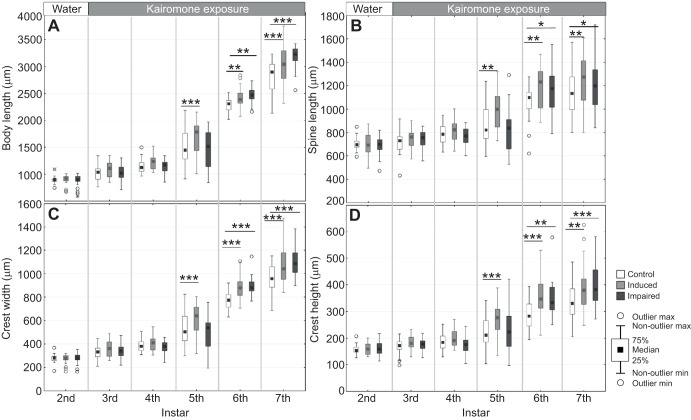Fig. 3.
Location of chemoreceptors for kairomone perception. Displayed are the individual parameters of inducible defences (A: body length, B: spine length, C: crest width and D: crest height) in D. longicephala in the measured instars (2nd to 7th) under control conditions (unexposed - white) and two kairomone treatment groups. One treatment group had intact first antennae (light grey), whereas in the other treatment group first antennae were impaired using underwater adhesive (dark grey). Prior to kairomone exposure, in the 3rd juvenile instar, no significant differences were observed between the three groups for all parameters of inducible defences. In animals with intact first antennae, defences were not significantly developed before the 5th juvenile instar because of the one instar time lag upon induction. Kairomone-treated animals with impaired first antennae showed no significant increase of defences until the 6th juvenile instar. With moulting into the 4th instar, impaired animals shed the underwater adhesive, by which the first antennae were uncovered and reactivated for kairomone detection. This results in significant development of defences in the 6th instar after an induction time lag of one instar. Defensive traits between both treatment groups (intact versus impaired first antennae) are not significantly different thereafter. *P≤0.05; **P≤0.01; ***P≤0.001.

